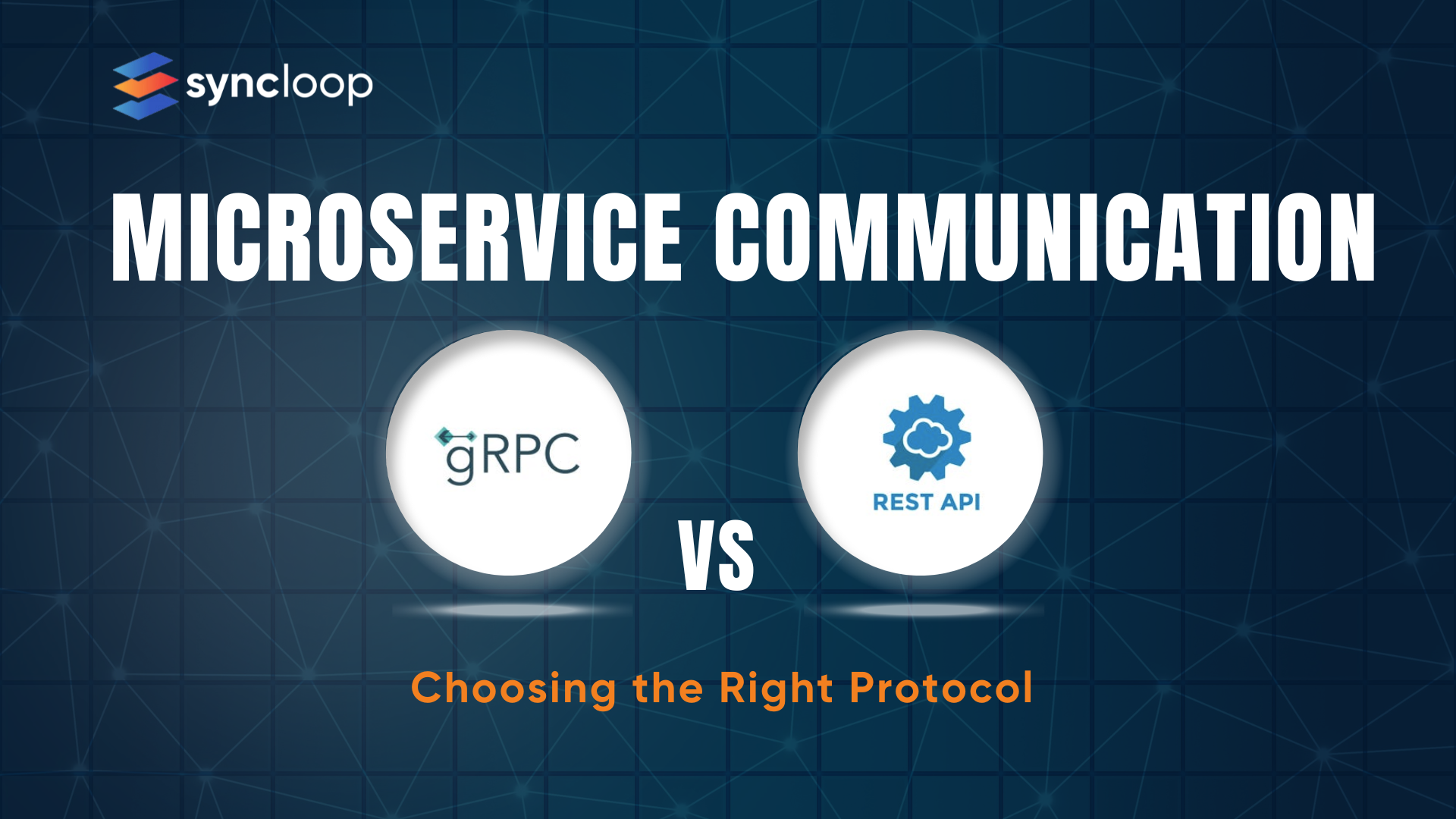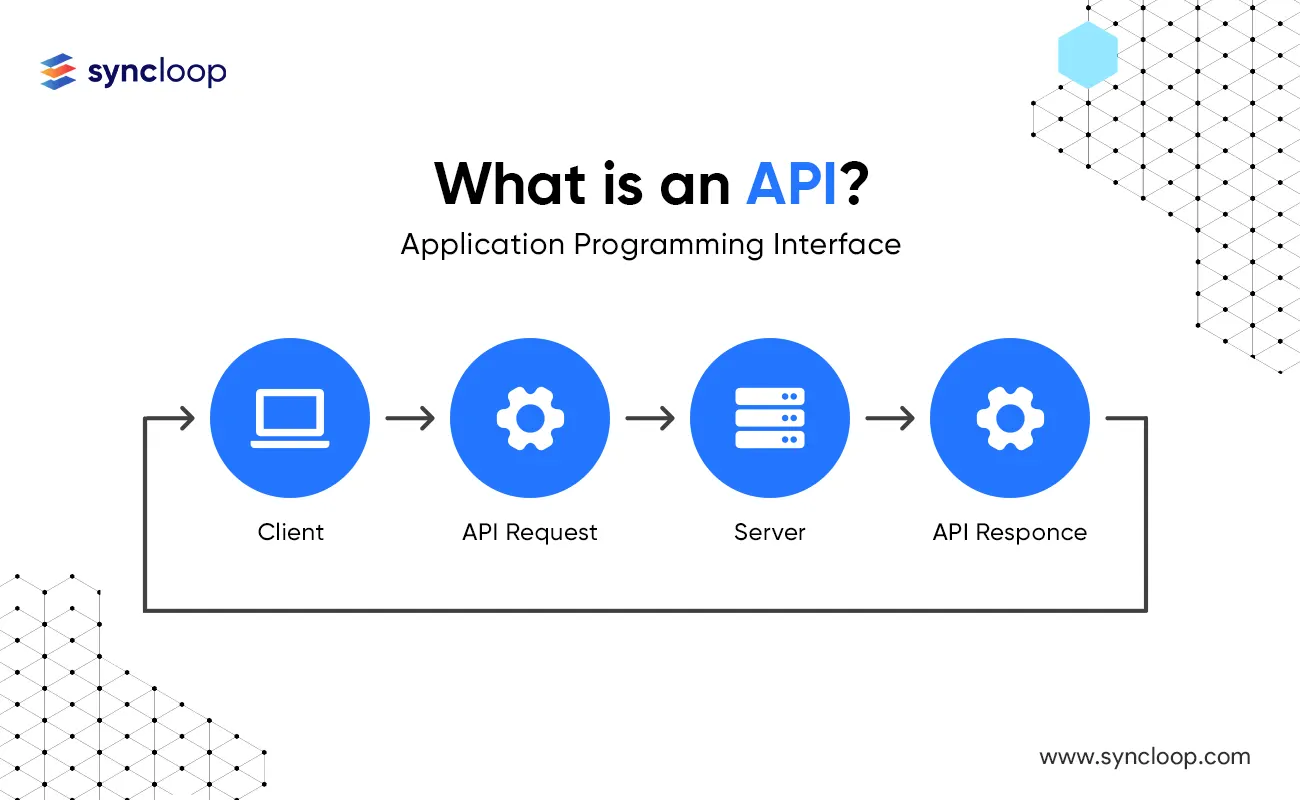Microservice Communication: RESTful vs. gRPC - Choosing the Right Protocol
Posted by: Deepak | April 05, 2024

Categories: microservice communication protocols, RESTful API vs gRPC, gRPC for microservices
The rise of microservices architecture has revolutionized application development. By decomposing monolithic applications into smaller, independent services, microservices offer numerous advantages like scalability, agility, and fault tolerance. However, this distributed nature introduces new challenges, particularly in communication between these microservices.
This blog delves into the two primary communication protocols used in microservices: RESTful APIs and gRPC. We'll explore their strengths, weaknesses, technical details, and best practices to help you choose the right protocol for your specific needs.
RESTful APIs: A Familiar Standard
REST (Representational State Transfer) APIs are the de facto standard for web API development. They leverage the familiar HTTP protocol with verbs like GET, POST, PUT, and DELETE to perform CRUD (Create, Read, Update, Delete) operations on resources. Here are some key features of RESTful APIs:
- Stateless: Each request-response interaction is independent, making REST APIs simple to understand and implement.
- Human-readable: RESTful APIs often use JSON or XML for data exchange, making them human-readable for debugging purposes.
- Widely Supported: Most programming languages and frameworks offer extensive support for building and consuming RESTful APIs.
Benefits of RESTful APIs:
- Universality: Integration with existing tools and libraries is easier due to widespread REST adoption.
- Load Balancing and Caching: RESTful APIs benefit from mature caching and load balancing strategies readily available in most infrastructure platforms.
- Ease of Use: The familiarity of HTTP verbs and data formats makes REST a popular choice for simple interactions or integrating with external APIs.
Drawbacks of RESTful APIs:
- Performance Overhead: The reliance on HTTP with its text-based payloads can introduce performance overhead for complex data transfers.
- Limited Streaming: REST primarily supports request-response communication, making it less suitable for real-time or bidirectional data exchange.
- Schema Agnostic: The lack of enforced data schemas can lead to inconsistencies and errors in data exchange between microservices.
gRPC: High-Performance for Modern Microservices
gRPC (Remote Procedure Call) is an open-source, high-performance RPC framework specifically designed for microservice communication. It utilizes HTTP/2 for transport, offering several advantages over traditional RESTful APIs. Here are some key characteristics of gRPC:
- Protocol Buffers: gRPC relies on Protocol Buffers, a language-neutral mechanism for defining data structures and remote procedure calls (RPCs). This ensures strong type checking and efficient data serialization.
- Bidirectional Streaming: gRPC supports various communication patterns, including request-response, server-streaming, client-streaming, and bidirectional streaming, enabling real-time data exchange.
- Binary Encoding: gRPC uses Protocol Buffers for compact binary data representation, leading to smaller payloads and faster communication compared to text-based formats in REST.
Benefits of gRPC:
- Performance: Binary encoding and efficient serialization protocols make gRPC ideal for high-performance, low-latency communication between microservices.
- Strong Typing: Protocol Buffers enforce data schemas, reducing errors and simplifying development compared to schema-agnostic REST.
- Streaming Support: gRPC's robust streaming capabilities make it well-suited for real-time applications and large data transfers.
Drawbacks of gRPC:
- Steeper Learning Curve: Understanding Protocol Buffers and the gRPC framework may require additional learning compared to familiar REST concepts.
- Limited Tooling Support: While tooling support is growing, it might not be as comprehensive as the vast ecosystem available for REST APIs.
- Limited Browser Support: gRPC primarily targets server-to-server communication and may not be ideal for browser-based interactions.
Choosing the Right Protocol: When to Use REST or gRPC
The choice between RESTful APIs and gRPC depends on your specific requirements. Here are some general guidelines:
1. REST for:
- Simple interactions with well-defined resources.
- Integrating with existing REST-based APIs or web applications.
- Scenarios where human-readable data formats (like JSON) are a priority.
2. Use gRPC for:
- High-performance, low-latency communication between microservices.
- Real-time data exchange or streaming applications.
- Internal APIs within your microservices architecture where strong typing and data consistency are crucial.
Integration Process and Use Cases
The integration process for both RESTful APIs and gRPC can be broken down into these steps:
- Define Service Interface: Define the API endpoints and their functionalities using tools like Swagger for REST or Protocol Buffers for gRPC.
- Implement Service Logic: Develop the microservice logic behind the API endpoints. This involves handling data access, business logic, and generating responses.
- Service Discovery and Registration: Utilize a service discovery mechanism like Consul or Zookeeper to register microservices and enable dynamic discovery by other services.
- Client-Side Integration: Develop client code within other microservices to consume the exposed APIs. Libraries like Axios for REST or generated client code from Protocol Buffers for gRPC are typically used.
- Monitoring and Observability: Implement monitoring tools to track API performance, identify errors, and ensure overall system health.
Here are some industry-specific use cases for both RESTful APIs and gRPC:
RESTful APIs:
- E-commerce: Public APIs for product search, shopping cart management, and order processing can be implemented with REST due to their ease of use and integration with web applications.
- Financial Services: REST APIs can be used for customer account management, transaction processing, and integration with external financial institutions. However, for core financial data exchange within the microservices architecture, gRPC might be a better choice due to its stronger security and performance benefits.
gRPC:
- IoT (Internet of Things): gRPC's real-time streaming capabilities are ideal for collecting and processing sensor data from IoT devices in a microservices architecture.
- Media and Entertainment: gRPC can facilitate high-performance communication between microservices for video streaming, content delivery, and real-time media processing.
Latest Tools and Technologies
The landscape of microservice communication protocols is constantly evolving. Here are some of the latest tools and technologies relevant to RESTful APIs and gRPC:
- API Gateways: API Gateways like Syncloop, Apigee and Kong can act as a single entry point for both RESTful APIs and gRPC services, providing security, load balancing, and other functionalities.
- Helm: A package manager for Kubernetes that simplifies the deployment and management of containerized applications, including low-code APIs.
- Service Meshes: Service meshes like Istio and Linkerd offer advanced traffic management capabilities for microservices, including support for both REST and gRPC communication.
- Cloud-Native Tools: Cloud providers like AWS, Azure, and GCP offer managed services for API development and communication, including tools for both RESTful APIs and gRPC.
Conclusion
Choosing the right communication protocol for your microservices architecture is critical for performance, scalability, and developer productivity. RESTful APIs remain a versatile choice for many scenarios, but gRPC offers compelling advantages for high-performance, real-time communication within microservices. By understanding the strengths and weaknesses of each protocol, and considering the latest tools and technologies, you can make an informed decision to ensure efficient and reliable communication between your microservices. Remember, the ideal choice depends on your specific requirements and the unique demands of your application.
Back to Blogs

